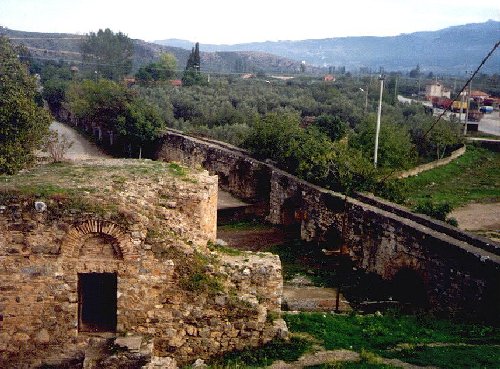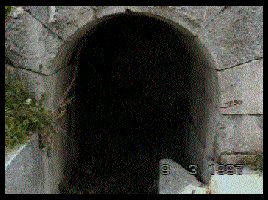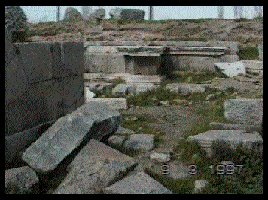
|
The following monuments are listed by written history and inscriptions,and most of them have been visited for many times and photographed by myself (A.Atay/KiosAgis).... A Theater, a Sanctuary of the Goddess Roma and of Caesar (built under Augustus) , an Apolloneion, a Market (built under Hadrian), an Aqueduct, and Churches and a Palace erected by Justinian. The coinage, from the period of Marcus Aurelius onward, commemorates a number of other monuments, among them the temples of Asklepios, of Dionysos, and of Tyche. AQUEDUCT  Click above picture to get the full size image of the Aqueduct THEATRE The Theater is at the SW of the city, though little remains of the building itself. Its recognizable dimensions reach a maximum of 85 x 55 m, and only part of the cavea is conserved; the orchestra and the skene have been lost. Its plan must have been Hellenistic but has been repeatedly modified. Click below pictures (taken by video cam in 1997) to get full images of the theatre (taken by dig cam in 2001) 
 
 (I also want to add an article here, which is related with the THEATRE ... ) EXCAVATIONS IN IZNIK -MASS GRAVES OF BYZANTINE SOLDIERS UNEARTHED(News dated 20th Aug 2000- by Anadolu Agency) Skeletons of Byzantine soldiers, who were killed by the armies of Crusaders, were found in five separate mass graves during the ongoing archeological excavations in Iznik township in Bursa province. Archeolog Bedri Yalman, the chief of the team which carries out the excavations on behalf of Culture Ministry, told A.A correspondent that they obtained very important findings during the excavations that started in 1980. Yalman said skeletons of many Byzantine soldiers, who were buried one on the other, were found in mass graves that were brought to daylight in open air theater constructed in the 8th century. ''Crusaders, set up to prevent spreading of Seljuks, arrived in Istanbul in 1204. Crusaders, who saw the richness of Byzantine Empire here, seized the ruling, and declared Latin Empire.'' ''Theodos Laskaris, Byzantine Emperor, withdrew to Iznik upon this development, and continued his administration here. Crusaders felt uneasy over this and this time staged attacks to Iznik. Clashes occurred between the sides. Dead bodies of the Byzantine soldiers could not be send away as the city was beiseiged, and they were buried in threater field. There were marks of wounds and brain operations on the skeletons,'' Yalman noted. He said the open air theater had a capacity for 15,000 people, adding that it was also destroyed by the Arab armies. Yalman also said canals were used in the open air theater to discharge the water which filled the place in rainy weather. OBELISK and the TOMB of IZNIK 

 


 

 |